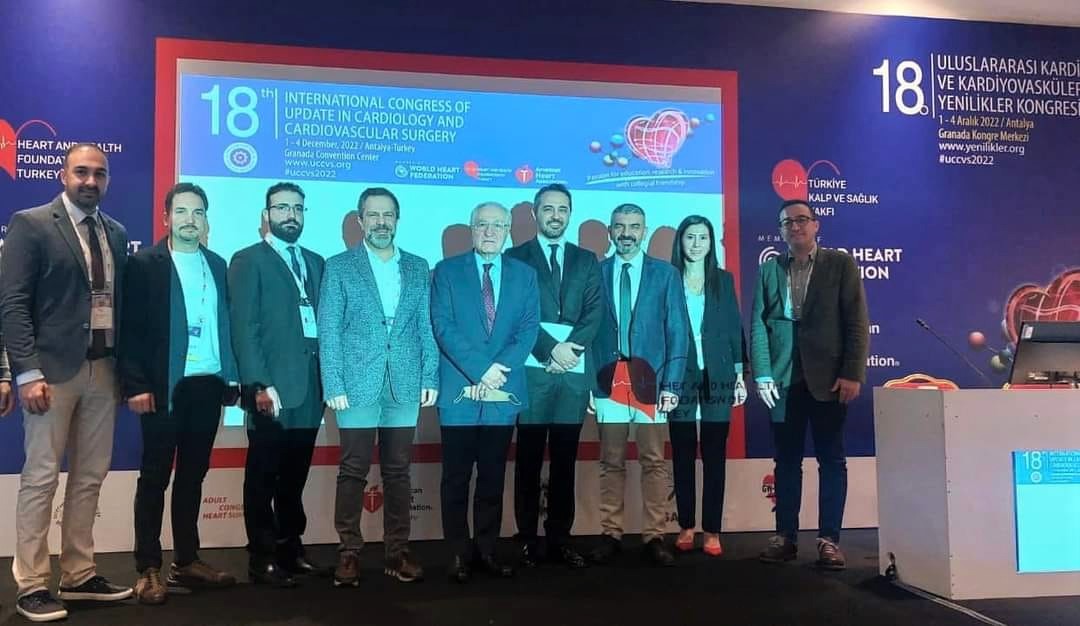
This year, the 18th “International Congress of Innovations in Cardiology and Cardiovascular Surgery” was held in Antalya. Prof. Dr. Hamza Duygu, Prof. Dr. Onur Akpınar, Dr. Aziz Günsel and Dr. Anıl Sarıca also attended the congress, and in the special session reserved for the Near East University, the “heart muscle bridge” disease, which is common in the TRNC and research results carried out by the Near East University Hospital Cardiology Clinic, was discussed.
The vessels feeding the heart, which carry blood to the heart muscle, run on the outer surface of the heart after the great artery leaves the aorta. Sometimes one of these veins, usually the vein in front of the heart, leaves the surface and plunges into the heart muscle, then rises to the surface again. If the part of the vessel remaining in the muscle contracts as the heart contracts, and expands when the heart relaxes, blood flow may be impaired. This situation is called “bridging of the heart muscle” because it is affected by the pressure of the muscle which is like a bridge above it. Although this does not cause any complaints in many people, it can sometimes cause serious problems.

The genetic link of the heart muscle bridge disease was revealed for the first time in the world, in the research conducted at the Near East University Hospital.
Myocardial bridge disease is an important disease that can trigger a heart attack, heart rhythm disorders and, in severe cases, sudden death in athletes. This congenital disease is observed quite frequently in the TRNC. Based on this observation, in the study carried out by the Near East University Hospital Cardiology Department, it was shown for the first time in the world that this disease may have a genetic background. In addition, advanced ultrasonographic examinations proved in the same study that this situation can lead to some changes in cardiac ultrasound in cardiac muscle bridge disease. In addition, this study, which includes genetic analysis of many other diseases, is expected to shed light on other studies to be planned for other diseases throughout Cyprus.
The study, which is planned to be shared with the medical world in an article, was discussed in detail at the “International Congress of Innovations in Cardiology and Cardiovascular Surgery”, which was held for the 18th time this year in Antalya, attended by authors from the international community. In the session chaired by Prof. Dr. Hamza Duygu and Prof. Dr. Onur Akpınar which was held by and reserved for Near East University, Dr. Aziz Günsel and Dr. Anıl Sarıca gave a speech and shared up-to-date information about the disease with the cardiology community.
Having many award-winning international articles on the subject, Prof. Dr. Hamza Duygu said that the absence of arteriosclerosis in the angiomas of young patients who come to the hospital with chest pain does not always mean that there is no problem. Pointing out that chest pain in some people may be due to the entrapment of the vessel in the heart muscle, Prof. Dr. Duygu pointed out that this situation can accelerate the formation and progression of atherosclerosis and that precautions should be taken.